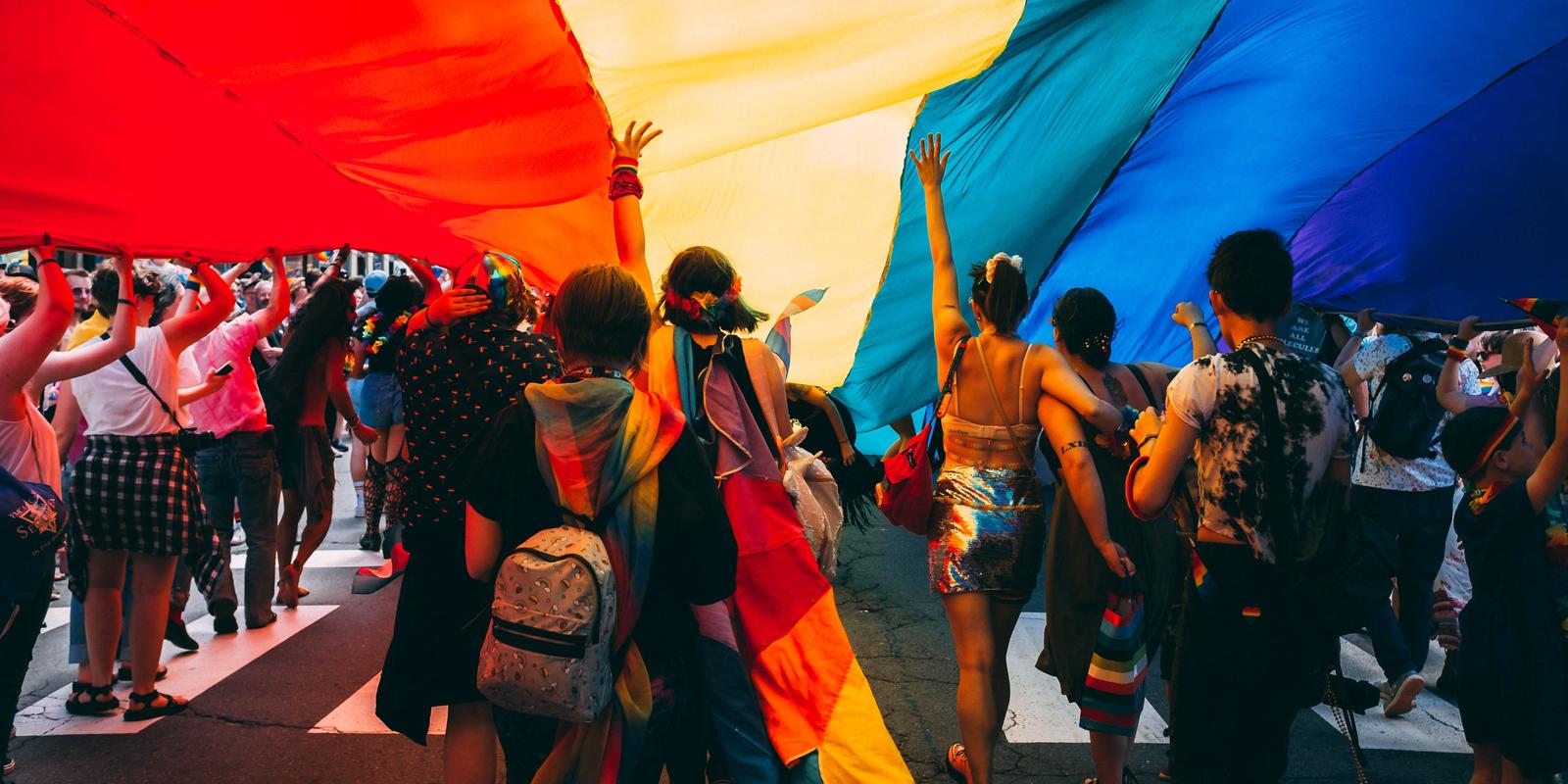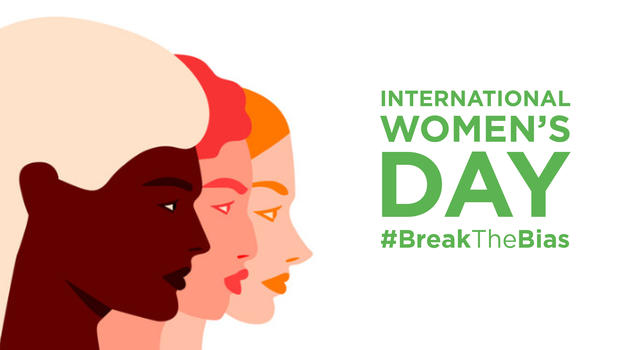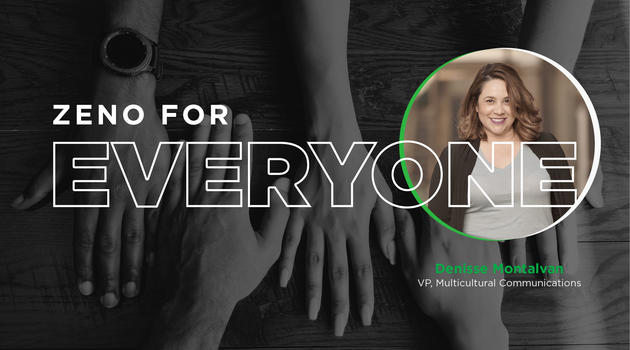Five Ways To Be Better LGBTQ+ Allies In Media and Communications During Pride 2022 and Beyond
By Emma Campher, Junior Planner and Josh Madrid, Assistant Account Executive
06/30/22

The world isn’t monotonous, and neither are humans. We’re vivid and diverse, vibrant and irreplaceable, varied and beautiful. And we are all so much more than what we produce for others, whether as a consumer or colleague. Amazing things happen when humans embrace who we are, the shared experiences that bond us and the differences that make us unique.
This rings especially true during Pride Month: a time for the queer and transgender communities to celebrate our authentic selves, raise awareness for pressing LGBTQ+ issues, honor those who came before us and reflect on the progress we’ve collectively made. For many queer folx, Pride Month feels extra exciting this year because many celebrations around the world came to a halt during the pandemic, and it’s the first time we’ve all been able to celebrate as a community in a few years. And for others, it is their first time ever celebrating their queerness.
But unfortunately, we don’t live in a perfect world that truly embraces all that makes us human. We know all too well how inequity and oppression of marginalized communities still run rampant. Celebrating feels bittersweet this year, especially with misinformation and dangerous stereotypes once again taking space in the public discourse. States are legislating away human rights with recent passing of their own versions of the “Don’t Say Gay” bill and a continuous onslaught of anti-transgender laws. The bubbling over of bigotry takes a toll on allies of the LGBTQ+ community, too, because they want to show up for friends, family, coworkers and loved ones in the best ways possible.
There is a genuine and urgent need for allyship in our fight for equality. We must reflect on our commitment to allyship – first as humans, then as communicators – so we can continue to move the pendulum forward, creating a world that fully embraces these communities and their magic.
This Pride Month, Zeno highlights a few actions that communicators and LGBTQ+ allies in our industry can take toward a more equal and equitable future for all.
-
Authentically advocate for queer representation outside of Pride Month
Corporations tend to fail acknowledging that queer people exist beyond Pride Month, and only include queer folx or advocate for queer issues during the month of June. From advertisements and influencer marketing to philanthropy and awareness campaigns, queer representation all but disappears once July hits.
No one can (or should) feel as if their existence matters one month of the year, so the fight for queer inclusion and representation must be a continuous effort, year-round. Allies within our industry must encourage our clients to authentically show up no matter the month.
Example: Wedding planning company Zola featured a lesbian couple in their winter holiday advertisements.
Exercise: When putting together a PR plan, think of how the queer and transgender communities are affected. If so, build in inclusive messaging with the community in mind.
-
Bring LGBTQ+ coworkers into the conversation
Actively seek out the voices and experiences of queer and transgender coworkers when putting together materials for clients. Give them the space to feel comfortable, welcome, and included during the process without tokenizing their identity and acknowledge their right to decline as well. Also recognize that some coworkers may not feel comfortable being fully “out” within the workplace, so it is important to respect their privacy. Pay attention if your team lacks diverse representation or perspectives.
Exercise: Working on a Pride campaign? Who is someone you know on your team or at the agency, regardless of their role, you can turn to for guidance when speaking to a LGBTQ+ audience?
-
Engage with diverse LGBTQ+ media, from influencers to news publications
Part of being a strong communicator is understanding who we are connecting with and how they view or navigate the world today. Engaging with diverse, queer media can lay the groundwork for this. Practice making a concerted effort to incorporate diverse representation in the influencers you select for brand campaigns throughout the year. There are LGBTQ+ experts and creators across all industries, so work with them.
When a new TV show or movie with positive LGBTQ+ representation is released, watch it. Pay attention to social media conversations around queer issues, trends, and hot topics. Turn on notifications for outlets like Advocate, Them and more, in addition to LGBTQ+ verticals at Huffington Post, NBC and Buzzfeed for news coverage. The content is out there and waiting for you to engage.
Exercise: Find five LGBQT+ reporters, editors, influencers, or any media whom you would like to work with. Add these individuals to media lists and new business decks when appropriate.
-
Incorporate more inclusive language into your vocabulary
As our colleague Bryant Miesle eloquently shared last Pride Month, our words have power beyond the fleeting moment we say them: “As communicators, we understand the power of a single word and the impact it can have on the people who read or hear it.”
To connect with authenticity and inclusivity, it’s vital for communicators to phase out unnecessary gendered verbiage from our daily language. Even if you are cisgender (your gender identity aligns with the sex you were assigned at birth), remaining mindful of how we communicate can foster a more inclusive space for those who are not cisgender. Phrases like “hey guys” or “what’s up girls” can be replaced with “hi everyone” or “hey y’all.” Sharing your pronouns is also important, both when meeting someone and within your online spaces (i.e. email signature, social media, Zoom name, etc.).
Exercise: Learn more about how to use gender neutral language. On internal and client calls, try to get in the habit of replacing unnecessarily gendered language with gender neutral alternatives. Similarly, determine if there are any components in client messaging that can be more inclusive.
-
Queer people are humans first and consumers second
The corporate embrace of Pride Month remains relatively novel. Not long ago, companies were less than eager to support queer rights or initiatives, such as protecting against employment discrimination and hate crimes. Today, rainbow-fied corporate logos, out-of-touch Pride campaigns and a small window for queer representation, all but disappearing once July hits, comes off as an inauthentic attempt to sell a product or service rather than a time used to celebrate the LGBTQ+ community.
Before coloring something rainbow, learn what the rainbow flag means. Commit to year-round allyship and support the community as humans before consumers. When brands show up with unapologetic authenticity and fearless activism, the LGBTQ+ community will show up too.
Exercise: Before participating in Pride Month, ask clients to consider how they can authentically elevate queer voices and direct attention to issues directly affecting the community. If clients don’t have the resources to enact meaningful change, removing themselves from the conversation and thinking of actionable ways to improve for next year may be the right approach.



